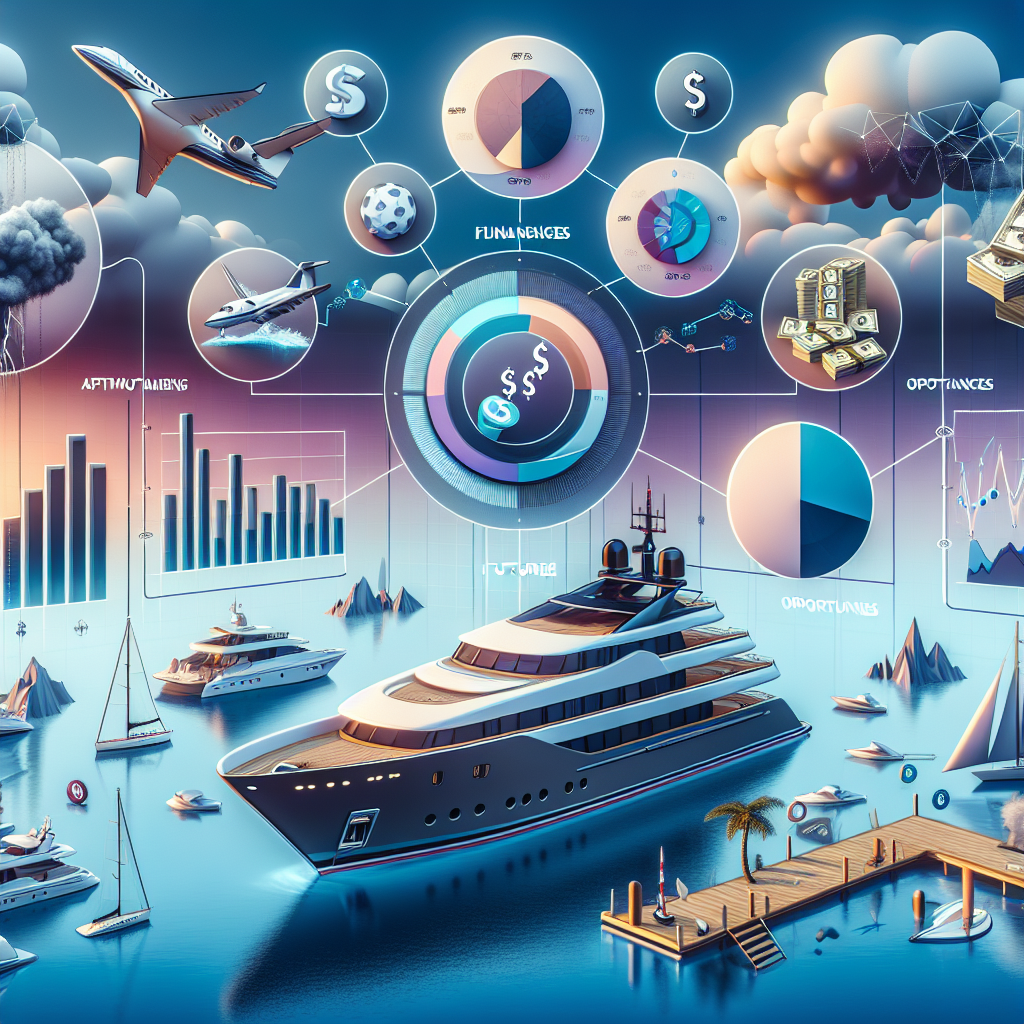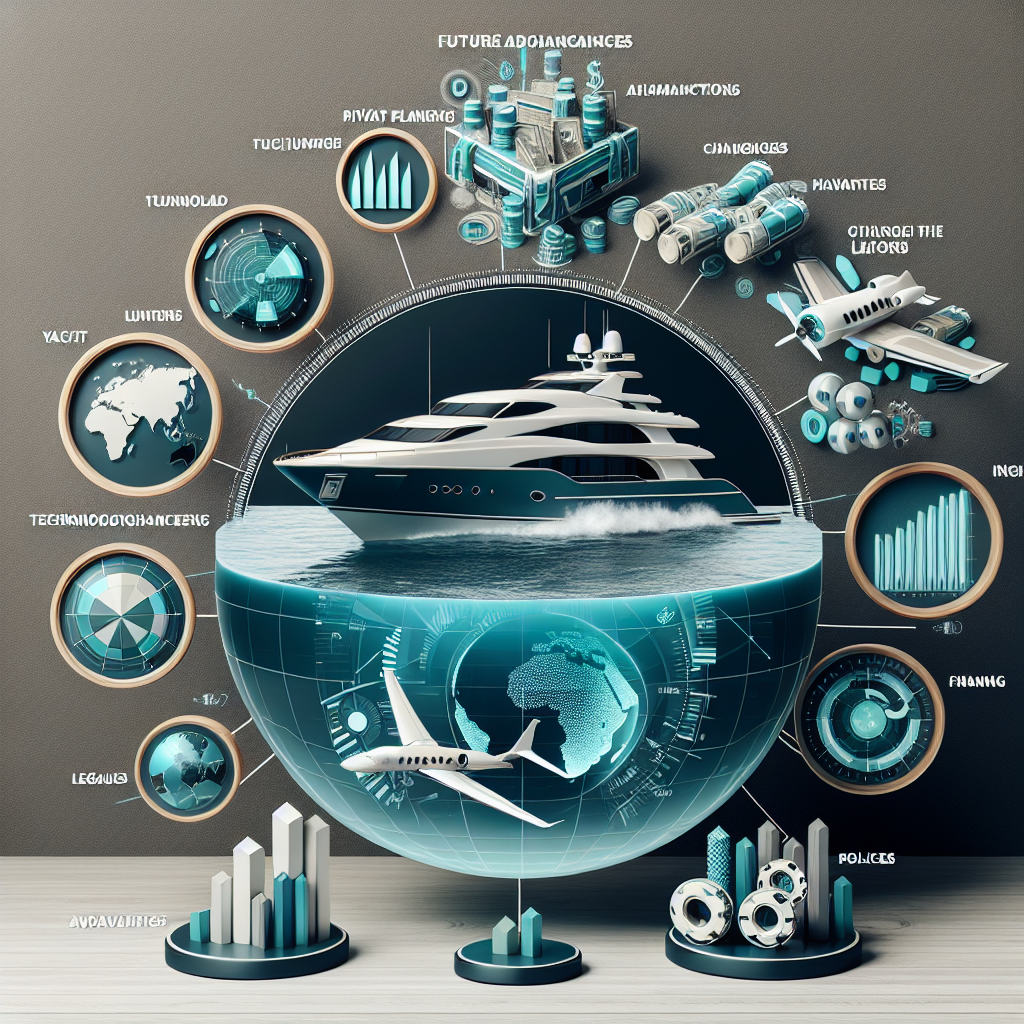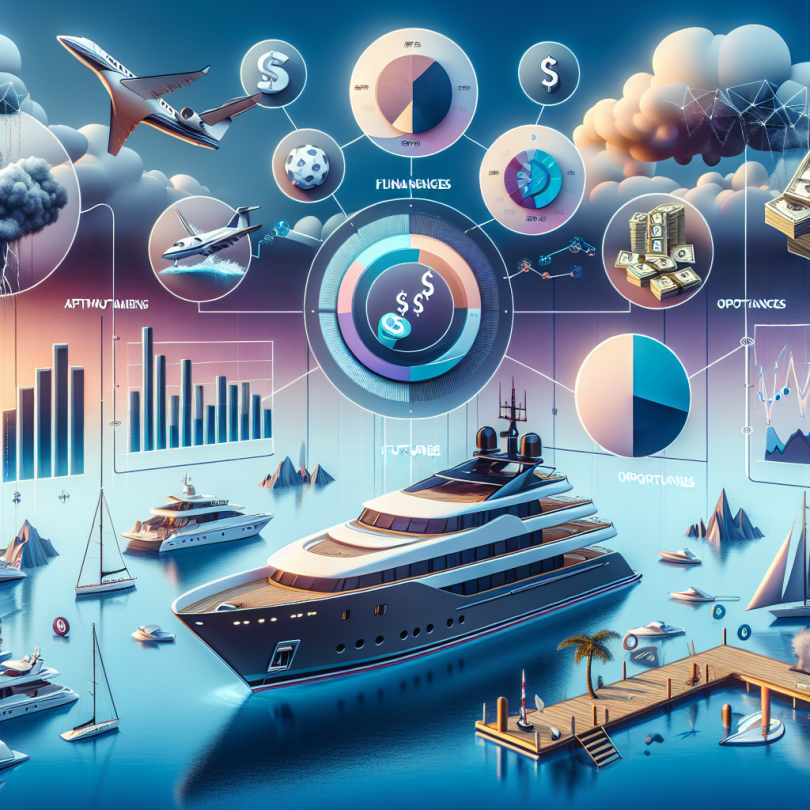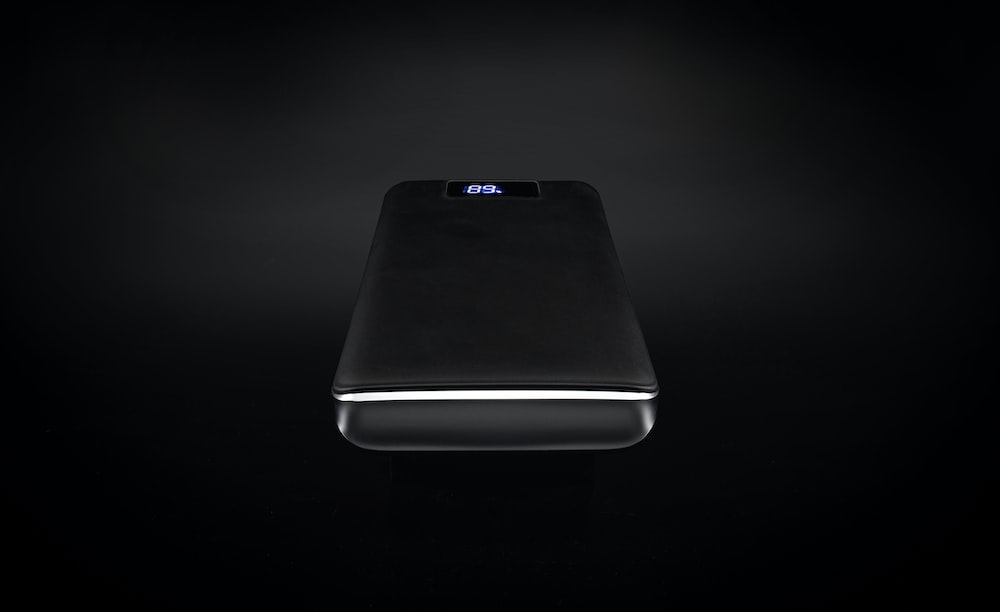The Future of Yacht Design: Emerging Trends and Innovations
1. Introduction
The yacht industry is on the cusp of a revolution, driven by rapid advancements in technology, a growing focus on sustainability, and evolving consumer preferences. This article explores the emerging trends and innovations that are set to shape the future of yacht design, offering a glimpse into what the next generation of yachts might look like.
2. Sustainability and Eco-Friendly Design
As environmental concerns become increasingly important, the yacht industry is prioritizing sustainability and eco-friendly design. Several key developments are driving this trend:
Hybrid and Electric Propulsion: One of the most significant advancements in sustainable yacht design is the adoption of hybrid and electric propulsion systems. These systems reduce fuel consumption and emissions, offering a quieter and more environmentally friendly alternative to traditional diesel engines. Companies like Tesla and Torqeedo are leading the way in developing electric propulsion technologies for yachts.
Solar and Wind Energy: Renewable energy sources, such as solar panels and wind turbines, are becoming more common on yachts. These systems provide clean energy for onboard systems and reduce reliance on fossil fuels. Some innovative yacht designs even incorporate sails that double as solar panels, maximizing energy efficiency.
Sustainable Materials: The use of sustainable materials is another critical aspect of eco-friendly yacht design. Designers are increasingly opting for materials that have a lower environmental impact, such as recycled metals, responsibly sourced wood, and biodegradable composites. These materials not only reduce the yacht’s carbon footprint but also enhance its overall sustainability.
Waste Management Systems: Advanced waste management systems are essential for minimizing the environmental impact of yachts. Modern yachts are equipped with systems that treat and recycle wastewater, manage solid waste responsibly, and reduce pollution. These systems ensure that yachts operate in an environmentally responsible manner.
3. Smart Yachts and Advanced Technology
The integration of smart technology is set to revolutionize yacht design, making yachts more connected, efficient, and user-friendly. Key innovations in this area include:
Internet of Things (IoT): The IoT is transforming yachts into smart, connected vessels. IoT devices and sensors can monitor and control various aspects of the yacht, such as lighting, climate, security, and entertainment systems. These devices provide real-time data and enable remote management, enhancing the overall yachting experience.
Autonomous Navigation: Autonomous technology is making its way into the yacht industry, with the development of self-navigating yachts. These yachts are equipped with advanced sensors, artificial intelligence, and navigation systems that allow them to operate without human intervention. Autonomous yachts promise to enhance safety, reduce crew requirements, and provide a unique yachting experience.
Augmented Reality (AR) and Virtual Reality (VR): AR and VR technologies are being used to enhance yacht design and operation. AR can provide real-time information and navigation aids to the captain, while VR can be used for virtual walkthroughs and design visualization. These technologies offer new ways to interact with and experience yachts.
Advanced Entertainment Systems: Modern yachts are equipped with state-of-the-art entertainment systems that offer a wide range of options, from high-definition screens and immersive sound systems to virtual gaming and augmented reality experiences. These systems provide unparalleled entertainment and comfort for guests.
4. Modular and Customizable Design
Flexibility and customization are becoming increasingly important in yacht design, driven by the desire for personalized and adaptable spaces. Two key trends in this area are:
Modular Design: Modular design allows for greater flexibility and customization, enabling yacht owners to reconfigure spaces to suit their needs. Modular components, such as interchangeable cabins, lounges, and dining areas, can be easily added or removed, providing a versatile and adaptable layout. This approach maximizes the use of space and resources, offering a more efficient and personalized yachting experience.
Customizable Interiors: Customization is a hallmark of luxury yacht design, with owners seeking bespoke interiors that reflect their tastes and preferences. Modern yacht designers work closely with owners to create unique and personalized spaces, incorporating high-end materials, custom furnishings, and tailored layouts. This level of customization ensures that each yacht is a one-of-a-kind masterpiece.
5. The Rise of Expedition Yachts
Expedition yachts, designed for long-range cruising and exploration, are gaining popularity among adventurous yacht owners. These yachts are built to withstand challenging conditions and offer greater autonomy and self-sufficiency. Key features of expedition yachts include:
Robust Construction: Expedition yachts are designed with robust hulls and reinforced structures to handle rough seas and extreme weather conditions. They often feature ice-class hulls for polar exploration and advanced stabilization systems for enhanced comfort.
Long-Range Capabilities: These yachts are equipped with large fuel tanks, efficient propulsion systems, and ample storage for provisions, allowing for extended voyages without the need for frequent resupply. They also have advanced navigation and communication systems to ensure safe and efficient travel.
Self-Sufficiency: Expedition yachts are designed to be self-sufficient, with systems for water and energy generation, waste management, and onboard maintenance. This self-sufficiency allows for greater autonomy and independence during long-range expeditions.
Exploration Equipment: To support exploration activities, expedition yachts are often equipped with specialized equipment, such as tenders, submarines, diving gear, and scientific instruments. These tools enable owners to explore remote and uncharted areas, conduct research, and engage in a wide range of activities.
6. The Impact of AI and Machine Learning
Artificial intelligence (AI) and machine learning are poised to have a significant impact on yacht design and operation. These technologies offer new possibilities for enhancing performance, efficiency, and safety. Key applications of AI and machine learning in yachting include:
Predictive Maintenance: AI-powered predictive maintenance systems can analyze data from sensors and equipment to predict potential failures and maintenance needs. This proactive approach helps prevent breakdowns, reduce downtime, and extend the lifespan of yacht components.
Optimized Performance: Machine learning algorithms can analyze vast amounts of data to optimize yacht performance, from fuel efficiency and speed to stability and handling. These algorithms can adapt to changing conditions and provide real-time recommendations for improving performance.
Enhanced Safety: AI systems can enhance safety by monitoring the yacht’s environment, detecting potential hazards, and providing real-time alerts. These systems can also assist with navigation, collision avoidance, and emergency response, ensuring a safer yachting experience.
Personalized Experiences: AI can be used to create personalized experiences for yacht owners and guests. From customized entertainment and climate control to tailored itineraries and activities, AI can enhance the overall yachting experience by catering to individual preferences and needs.
7. Conclusion
The future of yacht design is bright, with emerging trends and innovations set to transform the industry. Sustainability, smart technology, modular design, expedition capabilities, and AI are just a few of the key developments that will shape the next generation of yachts.
As designers and engineers continue to push the boundaries of what is possible, the yachting experience will become more luxurious, efficient, and environmentally responsible. Whether it’s exploring remote destinations on an expedition yacht, enjoying the latest smart technology, or experiencing the ultimate in personalized luxury, the future of yachting promises to be exciting and full of possibilities.
In conclusion, the yacht industry is poised for a period of significant innovation and growth. By embracing new technologies and sustainable practices, the industry can create a more dynamic and responsible future, offering unparalleled experiences for yacht owners and enthusiasts alike. The next generation of yachts will not only reflect the pinnacle of design and engineering but also embody the values of sustainability, innovation, and adventure.
8. The Role of Collaboration in Yacht Design
The future of yacht design will increasingly rely on collaboration among various stakeholders, including designers, naval architects, engineers, shipyards, and technology providers. This collaborative approach ensures that the latest innovations and best practices are integrated into yacht design and construction. Key aspects of collaboration include:
Interdisciplinary Teams: Yacht design projects often involve interdisciplinary teams that bring together expertise from different fields. Designers, naval architects, engineers, and interior decorators work together to create cohesive and innovative yacht designs. This collaborative approach ensures that all aspects of the yacht, from aesthetics to functionality, are carefully considered and optimized.
Partnerships with Technology Providers: Collaborating with technology providers allows yacht designers to integrate cutting-edge technologies into their designs. Partnerships with companies specializing in renewable energy, smart systems, and advanced materials enable the development of yachts that are more efficient, sustainable, and technologically advanced.
Client Involvement: Engaging clients throughout the design process is essential for creating personalized and bespoke yachts. By involving clients in decision-making and incorporating their feedback, designers can ensure that the final product meets the client’s vision and expectations. This collaborative approach fosters a strong relationship between the client and the design team, resulting in a yacht that truly reflects the owner’s preferences and lifestyle.
Industry Collaboration: Collaboration within the yacht industry, including shipyards, suppliers, and regulatory bodies, is crucial for advancing yacht design and construction. Industry partnerships facilitate the sharing of knowledge, resources, and best practices, driving innovation and improving overall quality and safety standards.
9. The Impact of Global Trends on Yacht Design
Global trends and societal changes are influencing yacht design, shaping the preferences and priorities of yacht owners. Some of the key global trends impacting yacht design include:
Health and Wellness: The growing focus on health and wellness is driving demand for yachts that offer wellness amenities and spaces. Features such as gyms, spas, yoga studios, and wellness centers are becoming standard on modern yachts. Designers are also incorporating biophilic design elements, such as natural materials and greenery, to create calming and rejuvenating environments.
Remote Work and Connectivity: The rise of remote work and the need for constant connectivity are influencing yacht design. Yachts are being equipped with advanced communication systems, high-speed internet, and dedicated workspaces to accommodate remote work and ensure seamless connectivity. This trend allows yacht owners to stay connected and productive while enjoying the luxury and tranquility of yachting.
Adventure and Exploration: The desire for adventure and exploration is driving the popularity of expedition yachts and adventure-focused designs. Yacht owners are increasingly seeking vessels that can take them to remote and uncharted destinations. This trend is reflected in the design of rugged and self-sufficient yachts that can navigate challenging environments and offer a wide range of exploration activities.
Cultural and Culinary Experiences: Yacht owners are placing a greater emphasis on cultural and culinary experiences. Modern yachts are designed to facilitate unique dining and entertainment experiences, with features such as gourmet kitchens, wine cellars, and outdoor dining areas. Designers are also incorporating spaces for cultural activities, such as art galleries, libraries, and music rooms, to enrich the yachting experience.
Sustainability and Conservation: The global focus on sustainability and conservation is influencing yacht design, with owners seeking eco-friendly and responsible yachting options. This trend is driving the adoption of sustainable materials, energy-efficient systems, and environmentally responsible practices in yacht design and construction.
10. Innovative Yacht Concepts and Prototypes
The future of yacht design is being shaped by innovative concepts and prototypes that push the boundaries of traditional design. Some of the most exciting and forward-thinking yacht concepts include:
Floating Islands: Floating island concepts envision yachts that function as self-sustaining floating habitats. These designs incorporate renewable energy systems, aquaponics, and sustainable living spaces, creating a unique and environmentally friendly yachting experience. Floating islands offer the possibility of long-term, off-grid living on the water.
Transformable Yachts: Transformable yacht concepts feature adaptable and reconfigurable spaces that can change to suit different needs and activities. These yachts may include retractable decks, expandable interiors, and modular components that can be rearranged to create various layouts and functions. Transformable yachts offer unparalleled flexibility and versatility.
Underwater Yachts: Underwater yacht concepts explore the possibility of submersible vessels that can operate both above and below the water’s surface. These designs incorporate advanced engineering and technology to create yachts that can dive to significant depths, offering a unique and immersive underwater experience. Underwater yachts provide new opportunities for exploration and adventure.
Eco-Luxury Yachts: Eco-luxury yacht concepts combine sustainability with high-end luxury, offering environmentally responsible yachting without compromising on comfort and style. These yachts are designed with eco-friendly materials, renewable energy systems, and sustainable practices, creating a luxurious and environmentally conscious experience.
Flying Yachts: Flying yacht concepts envision vessels that can transition between water and air, offering a new dimension of mobility and exploration. These designs incorporate advanced aerodynamics and propulsion systems to create yachts that can take off and land on water, providing a unique and exhilarating yachting experience.
11. Conclusion
The future of yacht design is marked by innovation, sustainability, and a focus on personalized experiences. Emerging trends and technologies are transforming the industry, creating yachts that are more efficient, environmentally responsible, and adaptable to the evolving needs of yacht owners.
As designers and engineers continue to push the boundaries of what is possible, the next generation of yachts will offer unparalleled luxury, performance, and sustainability. The integration of smart technology, modular design, renewable energy, and advanced materials will redefine the yachting experience, making it more connected, flexible, and eco-friendly.
In conclusion, the yacht industry is entering an exciting era of transformation and growth. By embracing new trends and innovations, the industry can create a more dynamic and responsible future, offering unique and unforgettable experiences for yacht owners and enthusiasts. The future of yacht design promises to be a harmonious blend of tradition and innovation, luxury and sustainability, adventure and comfort, setting the stage for a new era of yachting excellence.






